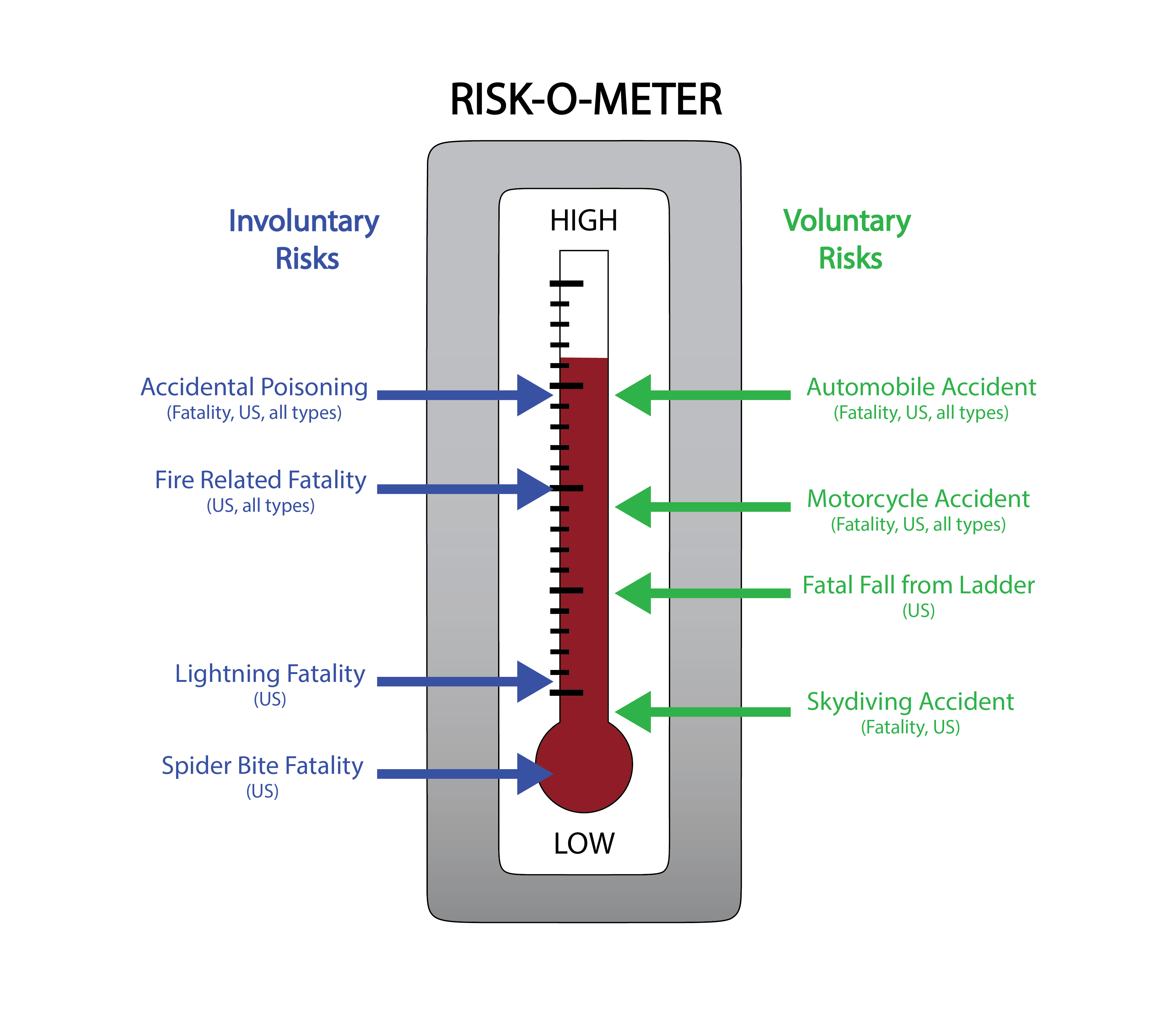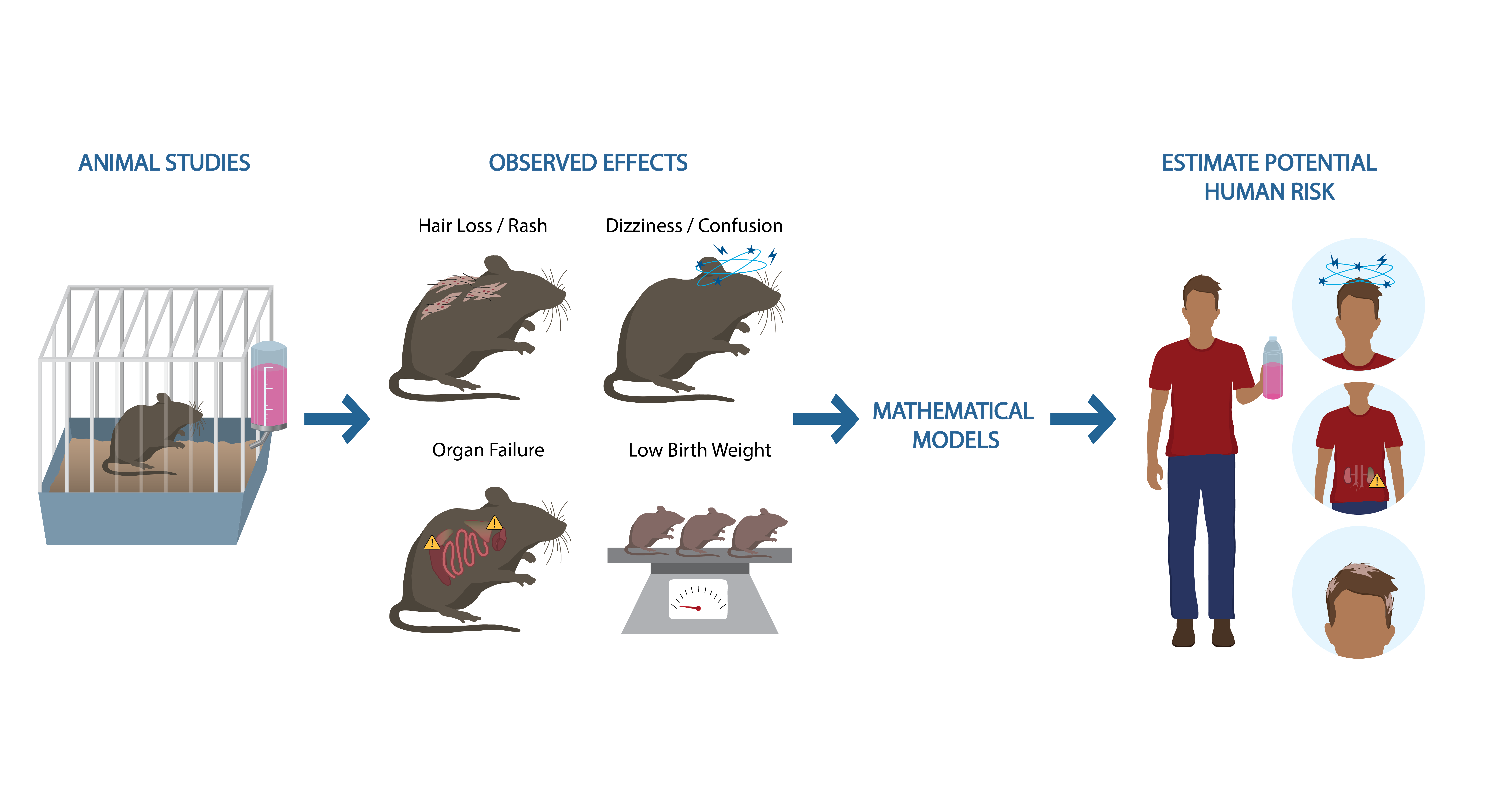RAIS: What is Risk Assessment?
What is risk?
The Oxford English Dictionary (Oxford University Press, 1971) defines risk as a "hazard, danger; exposure to mischance or peril". Therefore, to put oneself "at risk" means to participate voluntarily or involuntarily in an activity or event that could lead to injury, damage, or loss.

Voluntary risks are associated with activities that we decide to undertake (e.g., driving a car, riding a motorcycle, climbing a ladder, smoking cigarettes, skydiving, and formula one racing).
Involuntary risks happen to us without our prior consent or knowledge. Acts of nature, such as being struck by lightning, fires, floods, tornados, etc., and exposure to environmental contaminants are examples of involuntary risks.

Risks may also be defined as statistically verifiable or statistically nonverifiable. Statistically verifiable risks are from voluntary or involuntary activities that have been determined from direct observation. These risks can be compared to each other. Statistically nonverifiable risks are from involuntary activities that are based on limited data sets and mathematical equations. For example, we know the risk of a meteorite hitting a person is low, but because there is no record of such an event ever happening, it is statistically nonverifiable. Statisically nonverifiable risks are difficult to compare to one another (i.e., like comparing apples to oranges).
What are the risks of some common activities and events?

Risks associated with different activities and phenomena vary greatly. For example, as the Risk-o-meter illustrates, the chance of getting struck by lightning in the United States is low compared to fatality due to fire. These are involuntary risks, those that we have little control over.
Voluntary risks, on the other hand, are associated with activities that are largely controllable. Risk is a part of living; consequently, we are constantly evaluating the risks that face us on a daily basis. You may not be conscious of this assessment; however, you are considering risks, especially as they relate to voluntary activities, to ensure that you and those close to you are out of harm's way. For example, when leaving the house in the morning, you may consider if there is a chance of rain. The risk of getting soaked on the way to work is a risk you could avoid by carrying an umbrella.
Of course, there are many common activities that present more serious potentially life threatening risks. Transportation may be one of the most serious voluntary risks that we take on a regular basis. Driving a car or a motorcycle has a relatively high risk of injury due to accidents. Many of us may depend on driving a car to get to work or other destinations; therefore, we are willing to take the risk. To reduce the risk of accident and injury, safe guards such as air bags and antilock brakes are standard features on most vehicles. In addition, we can take risk precautions, such as reducing speed, increasing following distance in poor driving conditions, and wearing seat belts.
How are risks measured?
Public health risks are assessed either through direct observation or through mathematical models using assumptions based on animals studies to estimate potential risks for humans. The mathematical models produce two types of toxicity values: cancer risk and noncancer thresholds. Although different, they are both commonly called "risk values", and risk assessments include both types of toxicity studies because not all contaminants cause cancer.

How are cancer risks expressed?
Cancer risks are expressed as a probability of effects associated with a particular activity. Risk/probability is expressed as a fraction, without units, from 0 to 1.0. A probability of 1.0 indicates an absolute certainty that an event or outcome will occur. Scientific notation is generally used to present quantitative risk information.
| Actual Number | Fraction | Scientific Notation | Read As | |
|---|---|---|---|---|
| 0.1 | 1/10 | 1x10-1 | 1E-01 | One in ten |
| 0.01 | 1/100 | 1x10-2 | 1E-02 | One in a hundred |
| 0.001 | 1/1,000 | 1x10-3 | 1E-03 | One in a thousand |
| 0.0001 | 1/10,000 | 1x10-4 | 1E-04 | One in ten thousand |
| 0.00001 | 1/100,000 | 1x10-5 | 1E-05 | One in a hundred thousand |
| 0.000001 | 1/1,000,000 | 1x10-6 | 1E-06 | One in a million |
| 0.0000001 | 1/10,000,000 | 1x10-7 | 1E-07 | One in ten million |
How are noncancer "risks" expressed?
Noncancer "risk" results compare contaminant intakes to protective intake reference levels. If an intake level exceeds the protective level, negative effects are expected. The matematical process is to divide the intake by the reference level, and any quotient that exceeds one requires attention.